AnandTech Guide to Better Photos: Post-Processing
by Stephen Caston on March 18, 2005 3:45 PM EST- Posted in
- Digital Camera
Basic Color Correction
In this section, we are going to discuss one simple way to remove color casts from your images. Although this method cannot always correct heavy color casts, it does a very good job with subtle ones. It can also add a good amount of contrast to your image. This method assumes that your image has a point that should be pure black and a point that should be pure white. If your image is comprised of all subtle midtones, you might want to skip this method.When most people think of color correction, they might think of the “Color Balance” option under the Image/Adjustments menu in Photoshop. Unfortunately, using the “Color Balance” option can be very imprecise. Our method takes the guesswork out of the process so that you can simply find and specify the white and black points of your image. In this method, we will be using the Curves dialog box. Although Photoshop Elements does not offer Curves out of the box, we ran across this interesting website that shows you how to get some Curves functionality in Elements. However, since this Curves manipulation works a bit differently, we will be focusing on Curves in the standard version of Photoshop.
1) Open up the image that needs some color correction and set the view to “Fit to Screen”.
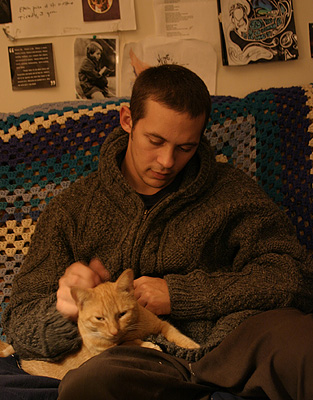
Original image
Click to enlarge.
2) Click the “New Adjustment Layer” icon (half white/half black circle on the layers palette) and select “Threshold”.

Create a new adjustment layer (Threshold)
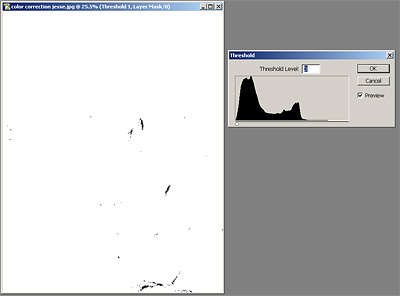
Find the black point
Click to enlarge.
5) Hold down the mouse button over the Eyedropper tool on the Tool palette. Then, select the Color Sampler Tool from the flyout menu.

Select the Color Sampler Tool
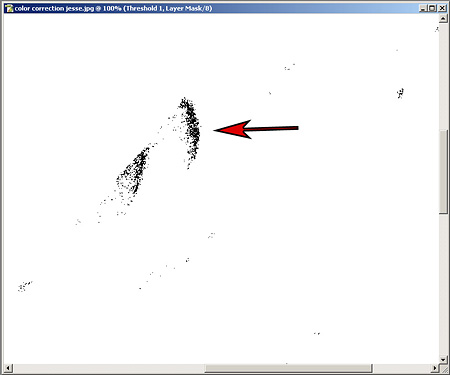
Sample the black point
Click to enlarge.
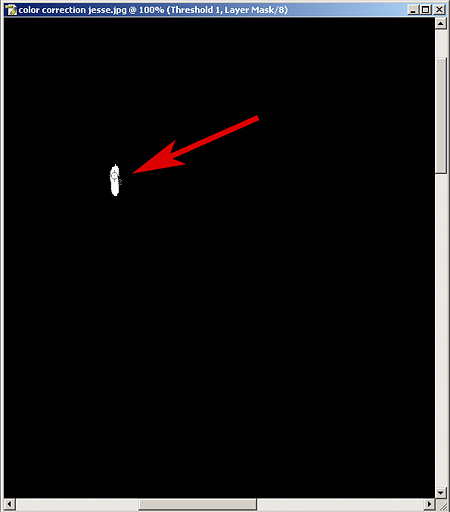
Sample the white point
Click to enlarge.
9) We can either work directly on our image or we can use a Curves Adjustment layer. The benefit of using Curves on an Adjustment layer is that we can always go back and edit the Curves layer or delete it entirely. If you decide to work directly on the image, you will not be able to change the Curves settings later. So, click on the New Adjustment Layer icon and select Curves.
10) The first thing that we want to do is to tell Photoshop how to define “Black” and “White”. Starting with black, double-click the black eye-dropper icon on the left (circled in red in the image below).
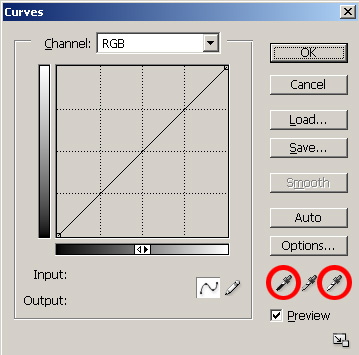
Curves dialog
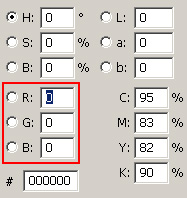
Define RGB values
11) Now that you have defined the RGB values for black and white, we can tell Photoshop where these points are in our image. From the main Curves dialog, select the black eye-dropper tool. Now, move over to your image and click on the sample point for the darkest part of your image. Then, click the white eye-dropper tool and select the sample point on the brightest part of your image. You can also use the “ Set Gray Point” eye-dropper if you have a neutral midtone in your image. If everything went as planned, you should see a difference and an increase in contrast. If you make a mistake at any point and want to start over, simply hold down the Alt key (Mac: Option) and the Cancel button will turn into a Reset button.
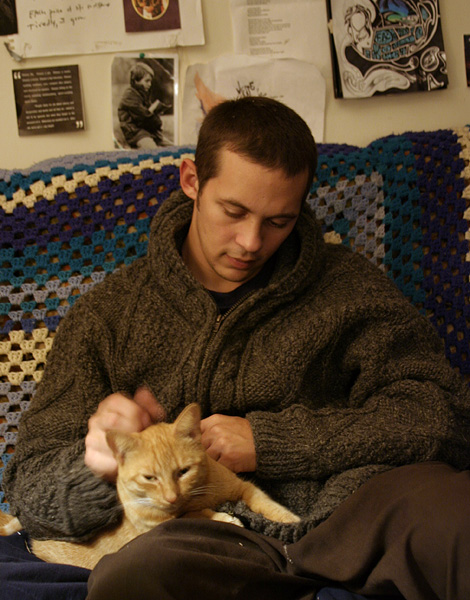
Image after setting black and white points
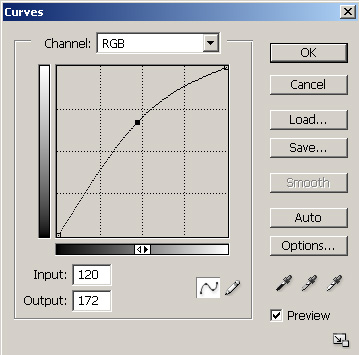
Brightening midtones
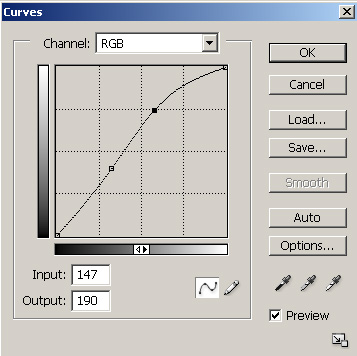
Creating an “S-Curve”
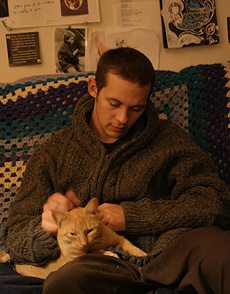 Before curve adjustment |
 After curve adjustment |
| Click images to enlarge. | |


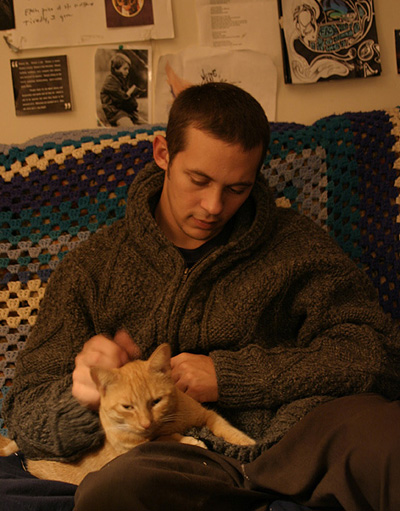








20 Comments
View All Comments
Bobby Peru - Thursday, June 23, 2005 - link
Would love it if you'd describe batch processing of photos. With Photoshop or, I think the simplest way is running ImageMagick on Linux or Windows Cygwin. You can just whack a whole folder of 100 photos with one simple command line. The underlying DSP algorithms are basically identical to Photoshops's.buttwhacker - Wednesday, April 13, 2005 - link
good article, very informative and i hope u can add to this article.THEJUICE - Tuesday, March 29, 2005 - link
Useful article and enjoy the series. Thanks.vladik007 - Thursday, March 24, 2005 - link
wouldnt it be better just using selection , feather , and adjusting color channels insidethat selection ?red is usually 100% , so you take it down to 5- 10 % , green and blue are best at 50 % in red channel...
never really liked burn tool for red eye ...
stephencaston - Monday, March 21, 2005 - link
#15,I assure you the original image was not doctored. That would defeat the purpose of post-processing ;-) We've updated the page to include a link to the original file. To get the brush to the right size, use the "[" and "]" keys to increase and decrease the brush size. In our example, the Color Replacement Tool is actually desaturating whatever you paint. So, if you can't get the brush to the exact size, it is best to select a smaller brush and paint around inside the pupil until the red-eye is gone. Good luck!
E Scott Channell - Monday, March 21, 2005 - link
I'm curious how the red-eye sample photograph was obtained... the red-eye region appeared to match the paint-brush shape perfectly... Sometimes getting good results takes a wee bit of fiddling so if this was a doctored "good photo" used for illustration it would provide unreasonable expectations as to what a "quick fix" can achieve.Also, if this is a doctored photo the article should make mention of that.
jeffbui - Sunday, March 20, 2005 - link
Good article as well. An amateur has to start somewhere.Gatak - Sunday, March 20, 2005 - link
Actually. Have you tried to do basic stuff like levels, curves and channel mixer with Gimp? The results are inferior to that of Photoshop, especially when you use 16bit/channel mode.AnandTech, you should do a article where you compare photoediting steps between Photoshop and Gimp.
PrinceGaz - Sunday, March 20, 2005 - link
Nice article if you use Photoshop [Elements]. Did Adobe sponsor this article, Stephen?Everything you told people how to do with Photoshop can be done just as easily with Paintshop Pro, the full version of which costs only slightly more than Photoshop Elements, but isn't a cut down version like Elements is. Unless it came free with the camera, or a scanner, you'd have to be crazy to go the Photoshop route just for tweaking your pictures when much cheaper and equally good options are available.
Even splashing out for Paintshop Pro is probably unnecessary for the vast majority of people who will find everything they need available in the freeware image program 'The Gimp'. It might have been better to assume people were using The Gimp rather than Photoshop, as everyone can download The Gimp free of charge (legally).
unhaiduc - Sunday, March 20, 2005 - link
great article, i read every one of your photo tutorials and loved every bit of it!cant wait for the next one :)